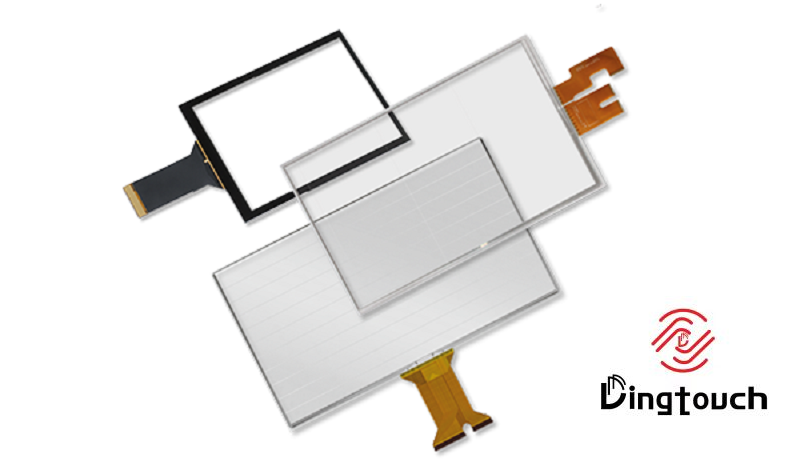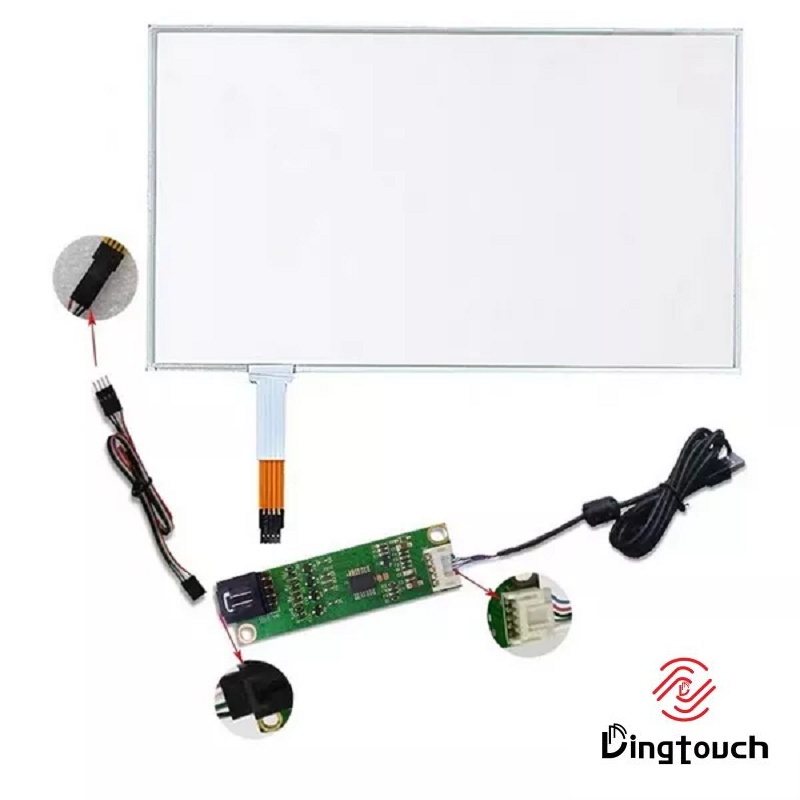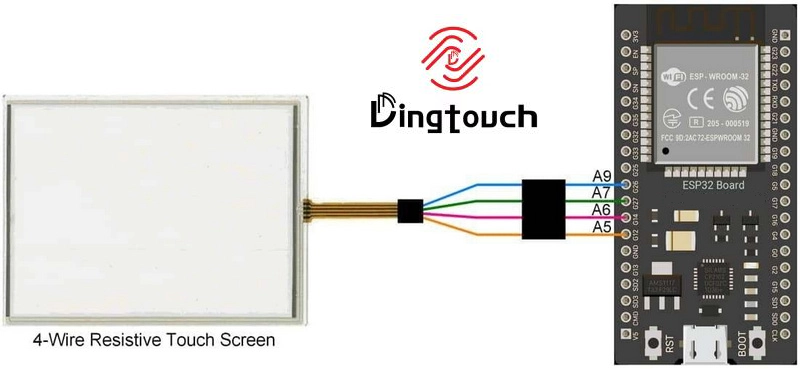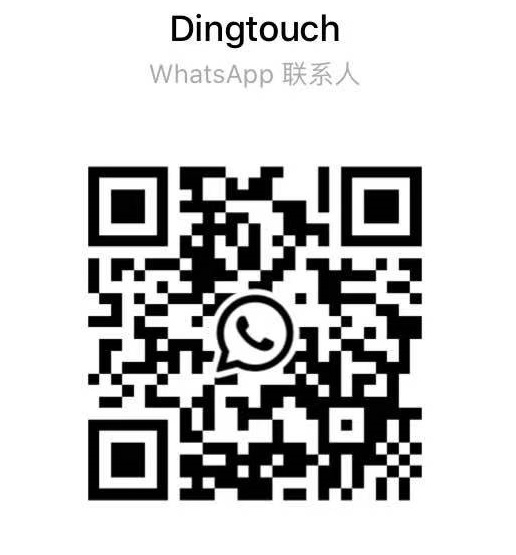News
How Does A 4-wire Resistive Touch Screen Work?
How Does A 4-wire Resistive Touch Screen Work?
Content Menu
● 1. Structure of a 4-Wire Resistive Touch Screen
● 3. Advantages of 4-Wire Resistive Touch Screen
● 4. Limitations of 4-Wire Resistive Touch Screen
● 5. Applications of 4-Wire Resistive Touch Screen
● 6. Challenges Faced by 4-Wire Resistive Touch Screen
>> 1. What is the difference between a 4-wire and a 5-wire resistive touch screen?
>> 2. Can resistive touch screen detect multiple touches simultaneously?
>> 3. Are resistive touch screen affected by environmental conditions?
>> 4. How long do resistive touch screen typically last?
>> 5. What types of devices commonly use resistive touch screen?
Resistive touch screen are integral to many electronic devices, providing a user-friendly interface for interaction. Among the various types of touch screens, the 4-wire resistive touch screen is particularly notable for its simplicity and effectiveness. This article delves into the workings of a 4-wire resistive touch screen, exploring its components, operational principles, advantages, limitations, applications, and future prospects.
1. Structure of a 4-Wire Resistive Touch Screen
A 4-wire resistive touch screen consists of two flexible layers coated with a transparent conductive material, typically indium tin oxide (ITO). These layers are separated by a small gap, allowing them to register touch when pressure is applied. The basic structure includes:
- Top Layer: A flexible film that responds to touch. This layer is usually made from materials such as PET (polyethylene terephthalate) or other durable plastics.
- Bottom Layer: Typically made of glass, providing a sturdy base that protects the conductive layer beneath.
- Controller: An essential component that interprets the signals generated when the two layers make contact. The controller converts the analog signals into digital data that the device can understand.
2. How It Works
The operation of a 4-wire resistive touch screen can be broken down into several steps:
1. Voltage Application: The controller applies voltage across the X-axis electrodes of the bottom layer. This creates a voltage gradient across the screen.
2. Touch Detection: When a user touches the screen, the top layer bends and makes contact with the bottom layer. This contact changes the voltage at the point of touch.
3. Signal Measurement: The controller measures changes in voltage at the contact point. By knowing the voltage applied and the resistance of the layers, it can calculate the exact coordinates of the touch.
4. Coordinate Calculation: The controller first determines the X-coordinate by measuring the voltage drop across the X-axis. It then applies voltage across the Y-axis electrodes and measures the voltage drop to find the Y-coordinate.
5. Data Processing: Once the coordinates are determined, this information is sent to the device's processor for action, allowing for real-time interaction.
3. Advantages of 4-Wire Resistive Touch Screen
4-wire resistive touch screen offer several significant advantages:
- Cost-Effective: Generally cheaper to manufacture than other touch technologies like capacitive screens, making them ideal for budget-conscious projects.
- Durability: The glass substrate provides resistance against scratches and impacts, ensuring longevity even in harsh environments.
- Versatility: They can be used with fingers, gloves, or styluses, making them suitable for various applications including industrial and medical settings.
- Environmental Resistance: Less affected by dust and moisture compared to capacitive screen, which makes them ideal for outdoor use or in environments where cleanliness is a concern.
4. Limitations of 4-Wire Resistive Touch Screen
Despite their benefits, 4-wire resistive touch screen have some drawbacks:
- Lower Sensitivity: They require more pressure to register a touch compared to capacitive screen, which can lead to user frustration in some applications.
- Limited Multi-Touch Capability: Most models can only detect one touch point at a time, which limits their use in applications requiring complex gestures or multi-user interactions.
- Image Clarity: The additional layers can reduce display brightness and clarity due to light refraction and absorption properties of ITO coatings.
Related Questions
1. What is the difference between a 4-wire and a 5-wire resistive touch screen?
The primary difference lies in how they measure voltage; a 5-wire system measures only from the lower layer while a 4-wire uses both layers for measurement.
2. Can resistive touch screen detect multiple touches simultaneously?
No, traditional 4-wire resistive touch screen can only detect one touch point at a time.
3. Are resistive touch screen affected by environmental conditions?
Yes, they are less affected by dust and moisture compared to capacitive screen but can experience positional drift due to temperature variations.
4. How long do resistive touch screen typically last?
They are usually rated for around 4 million touches per spot under normal use conditions.
5. What types of devices commonly use resistive touch screen?
They are commonly found in consumer electronics like smartphones, industrial equipment, medical devices, and point-of-sale systems.
DINGTouch: Committed to continuous innovation and improvement of product quality to meet customers' high requirements and expectations.
DINGTouch is a manufacturer that provides high quality touch screen panels. Focus on the design, manufacturing and sales of touch screen panels, and are committed to providing customized solutions that satisfy customers.
DINGTouch: In the process of customizing touch screen panels, we focus on close cooperation and communication with customers. Understanding customers' needs and providing customized solutions will meet customers' individual needs. The company's products are favored by customers for their high quality and reliability, and provide them with the best touchscreen panel solutions.
At DINGTOUCH, we are the world's leading touchscreen manufacturer, helping businesses around the world take advantage of this exciting technology. For more information, please visit the home page now.
Find the DINGTouch technical team to achieve the success of your company's new project.
How to choose touch screen customization?
DINGTouch is a company specializing in the R&D and production of touch screen technology, headquartered in Shenzhen, China. As a professional touch screen supplier, DINGTouch is committed to providing high-quality, stable and reliable touch screen products to meet the diverse needs of customers. We continue to carry out technological innovation and product optimization to ensure that its touch screen products have good sensitivity, accuracy and durability.
In addition to the products themselves, we also focus on cooperation and communication with customers, and are committed to providing customized solutions and excellent after-sales services. Through continuous efforts to improve product quality and customer satisfaction, we have established a good reputation in the touchscreen industry and won widespread market recognition.
What DINGTOUCH can do:
• PCAP maximum size 65”
• Multi-touch (Touch screen can be customized to your needs.)
• Optical bonding service/air bonding
• LCD interface: HDMI/RGB/MIPI/LVDS/EDP, etc.
• PCAP interface: IIC/USB interface
• CTP can customize the cover glass surface treatment process AG (anti-glare), AR (anti-reflection), AF (anti-fingerprint), waterproof, and glove touch
• Supports 0.55 mm-12 mm coverslip touch.
• Support operating temperature: -40℃-90℃.
Dingtouch Industrial Capacitive Touch Screen Manufacturer
In conclusion, Dingtouch as a professional touch screen manufacturer with more than 10 years touch screen experience.We have many capacitive touch screen. Such as5 inch touch screen,7 inch touch screen,10.1inch touch screen,15 inch touch screen,15.6 inch touch screen,17 inch touch screen,18.5 inch touch screen,19 inch touch screen,21.5 inch touch screen,32 inch touch screen, However, we also welcome to customize your own touch screen . Contact our team today to learn what capacitive touch screen are best for our retail business needs.
Contact us NOW! sales@szdingtouch.com

CATEGORIES
CONTACT US
Contact: Dingtouch
Phone: +8615815536116
Tel: +8615815536116
Email: sales@szdingtouch.com
Add: Building A, Bailu Plaza, No. 48, Gonghe Industrial Road, Gongle Community, Xixiang Street, Baoan District, Shenzhen,China. 518126









 Dingtouch
Dingtouch